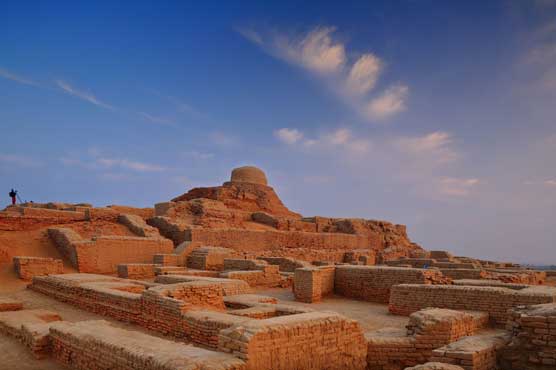Climate change likely caused demise of Indus valley ancient civilizations

Summer monsoon over the valley gradually dry up, making the agriculture difficult or impossible.
(Web Desk) - More than 4,000 years ago, the Harappa culture thrived in the Indus River Valley of what is now modern Pakistan and northwestern India, where they built sophisticated cities, invented sewage systems that predated ancient Rome s, and engaged in long-distance trade with settlements in Mesopotamia.
Yet by 1800 BCE, this advanced culture had abandoned their cities, moving instead to smaller villages in the Himalayan foothills. A new study from the Woods Hole Oceanographic Institution (WHOI) found evidence that climate change likely drove the Harappans to resettle far away from the floodplains of the Indus.
According to American scientists, 2500BC, summer monsoon over the valley gradually dried up, making the agriculture difficult or impossible near Harrapan cities that caused the end of great civilization, says Liviu Giosan, a geologist at WHOI and lead author on the paper that published Nov. 13, 2018, in the journal Climate of the Past.
Giosan says. "As winter storms from the Mediterranean hit the Himalayas, they created rain on the Pakistan side, and fed little streams there. Compared to the floods from monsoons that the Harappans were used to seeing in the Indus, it would have been relatively little water, but at least it would have been reliable."
During this time, the Mediterranean storm used to hit the Himalayas and caused rainfall in Pakistani areas, but due to lack of moisture, river flow was severely affected. Therefore, the people of Sindh Valley shifted to other areas, and the whole town became empty.
Although archaeological remains do not match today s soil, experts have collected and studied soil samples on Pakistani shores and many places of the sea. They have sampled these cells in a single cellular plankton, which are called mini ferras . It came to know which plankton cooled in the cold weather and which in summer.
In this way, he studied the ancient DNAs of the region. During this time ancient soil present in the river and the seaside area and the ancient plants of its own, set a map of the ancient seasons of thousands of years, to find out how the summer of monsoon weakened and weeding of summer and Agriculture has become impossible.
In the next phase, people started to leave these great cities of the past, and they were migrated to other areas of the world and thus it turned to Mohenjo-daro and Harappa.


